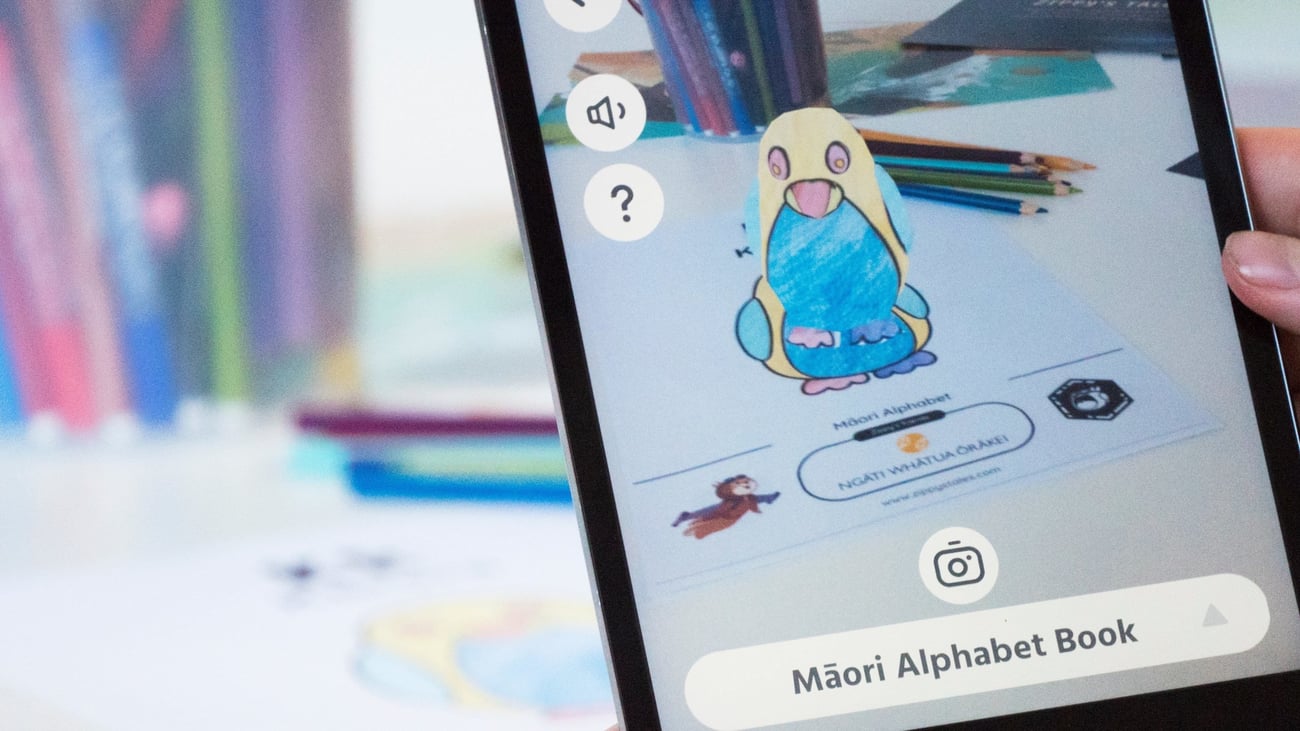
Aotearoa start-up Titan Ideas has launched an augmented reality (AR) app, called Zippy’s 3D Colouring App, that takes kids on adventures through educational cultural stories.
Ok, so by itself that might not be earth-shatteringly newsworthy. But consider this: it’s the world’s first AR-enabled M?ori alphabet colouring “book.”
The “book” was released on Waitangi Day (February 6) in collaboration with Ng?ti Wh?tua ?r?kei, a hap? (subtribe) of the wider Ng?ti Wh?tua iwi whose ancestral lands are around the T?maki isthmus and Auckland (T?maki-makau-rau). The cool thing about it too is it’s not something someone has to go to a bookstore to buy – the pages can be downloaded via an app (including iOS and Android) or the Zippy’s Tales website.
The way the book itself works is pretty easy to grasp. Once kids (or kids at heart – anyone remember the adult colouring book craze?) colour-in the pages, their creations come to life in 3D, and Zippy’s voiceover teaches kids the M?ori alphabet. This makes M?ori stories more easily available to future generations, and helps share M?ori legends and the language.
Ng?ti Wh?tua ?r?kei head of innovation Te Aroha Morehu is one person who’s pretty excited. “Ng?ti Wh?tua ?r?kei are absolutely thrilled to form this hononga (connection) with Zippy to explore and share our story, and the stories of Aotearoa.”

A page from the “book.”
Zippy’s Tales is a multi-platform storytelling experience that spans across multiple AR and VR apps developed at Titan. Zippy’s mission is to empower children to grow into all-rounded human beings by providing them life lessons and expand their cultural horizons using storytelling, gamification and new technologies.
The Zippy’s Tales mythos is centred upon “Zippy,” who lives on a floating tree in space and explores life on Earth through the myths, legends and folktales that have been passed down from generation to generation. Along the way, Zippy learns values like responsibility, courage, trust and resourcefulness, and also learns about the consequences of good and bad decisions.
Titan Ideas founder and CEO Abhi Kala, lecturer in digital media at Auckland University of Technology (AUT), noticed that AR and VR could have a powerful effect on the way children learn and how stories are passed on. He believes that modern technology is the answer to teaching cultural understanding and acceptance. “Immersive technologies bring the physical and virtual worlds together,” he says. “We want to use this technology as a tool to help children develop strong self-identity, by providing them life lessons and knowledge from different cultural folktales. These stories educate children about diversity, morality and culture, both their own and internationally, through folktales in a unique and fun manner.”

Abhi Kala.

Zippy’s Tales was created in-house at AUT with a team of researchers and technologists. AUT Ventures has also come on board as a shareholder to invest in the project.
Dr Jannie van Hees, from the New Zealand Council for Educational Research, is another person who believes in the potential of AR to help pass on a language and culture. “Zippy’s Tales is a hugely exciting lever and initiative which opens up many lenses on culturally inclusive pedagogies in the schooling space. It also opens up a window for families, communities, individuals to ’tell their stories’ and gift these precious ’truths of being and seeing’ to their own young ones, and us as a society and country.”
Zippy’s Tales currently tells cultural stories from Aotearoa, but Titan Ideas is also expanding the stories to Indian and Chinese folklore.
Along with Zippy’s 3D Colouring App, Titan Ideas are also launching Zippy’s AR Toybox, using the new AR kit recently released by Apple, joining the likes of Amazon and Ikea. The AR kit is a new framework that allows users to easily create unparalleled AR experiences on Apple devices.
This isn’t the first example of using innovative tech to pass on Te Reo, particularly to children. In 2016, H?hepa Tuahine and Kristin Ross – who learned Te Reo at university but wanted to teach the language to their children – launched Pipi M?, the world’s first M?ori speaking dolls. Idealog has covered the story of Pipi M? (which also won the People’s Choice Award at last year’s New Zealand Innovation Awards) before.




